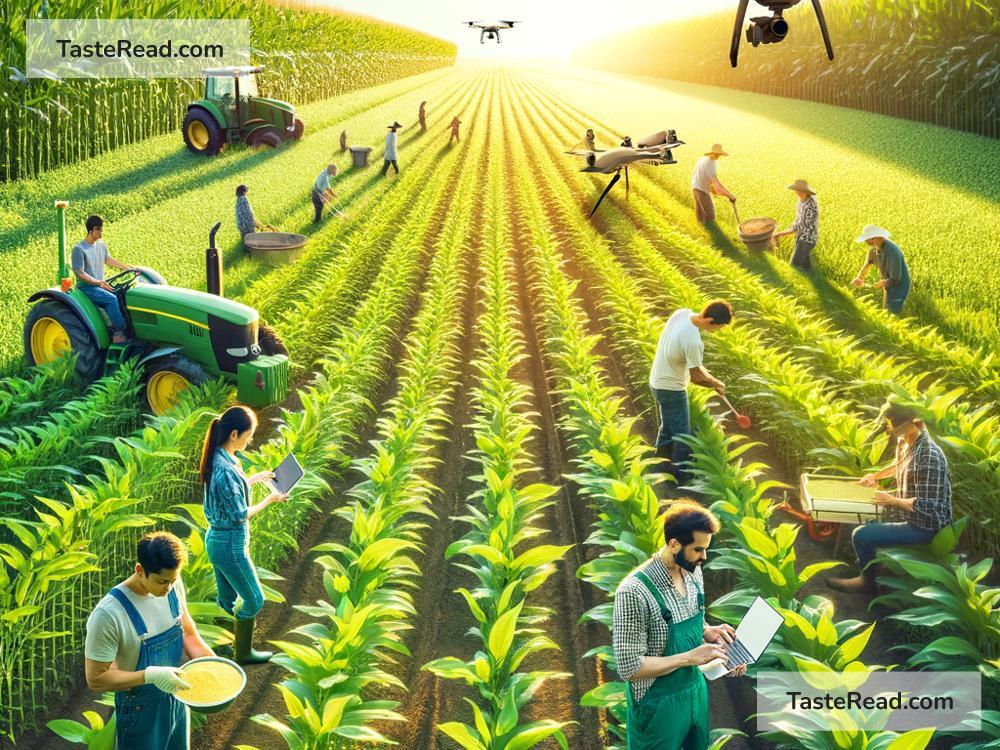The Future of Agriculture: Genetically Modified Organisms
Genetically Modified Organisms, commonly called GMOs, are a topic that sparks curiosity, interest, and debate. These are plants, animals, or microbes that have been altered using science to introduce specific traits. While some people worry about GMOs, others see them as the future of agriculture. In this blog, we’ll break down what GMOs are, how they are used in farming today, and what their future might look like.
What Are GMOs?
GMOs are created when scientists change the DNA of a plant, animal, or microorganism. DNA is like a set of instructions that tells living things how to grow and function. By tweaking the DNA, scientists can create organisms with helpful traits. For example, they can make crops that grow faster or resist pests and diseases.
This process can involve adding genes from one organism to another, or simply tweaking genes that are already there. It’s not magic—it’s science! In fact, humans have been altering plants and animals for thousands of years through selective breeding. The difference is that genetic modification allows scientists to be more precise and faster in achieving desired results.
GMOs in Agriculture Today
Agriculture is one of the main areas where GMOs are used. Imagine you’re a farmer. You work hard to grow crops, but insects and bad weather ruin a lot of your plants. GMOs can help! Scientists can modify crops so they’re more resistant to pests, diseases, and droughts.
Here are some of the most common uses of GMOs in farming today:
-
Pest-resistant crops: Bugs can destroy crops quickly, but GMOs like Bt corn are made to fight back. These crops can produce a natural toxin that kills pests, making it easier for farmers to protect their fields.
-
Herbicide tolerance: Weeds steal nutrients from crops, but pulling them out takes time and effort. GMOs like Roundup Ready soybeans can resist herbicides, so farmers can spray their fields to kill weeds without harming their crops.
-
Disease resistance: Some crops are prone to diseases, but genetic modification can make them stronger. For instance, scientists created papayas that resist ringspot virus, a disease that was destroying papaya farms in Hawaii.
-
Improved nutrition: GMOs aren’t just about protecting crops—they’re also helping create food with more nutrients. Golden rice, for example, is a GMO crop with added vitamin A to help fight malnutrition.
Benefits of GMOs
GMOs offer many potential benefits, especially as the global population grows and food demand increases. Some of the biggest advantages include:
- Higher crop yields: GMOs can produce more food on the same amount of land, which is important as farmland becomes scarce.
- Reduced pesticide use: Crops that resist pests often need fewer chemical sprays, which can be better for human health and the environment.
- Climate adaptability: With changing weather patterns, GMOs can help crops survive extreme heat, drought, or floods.
- Improved nutrition: GMOs can address hunger and malnutrition by adding important nutrients to staple foods.
Concerns About GMOs
Despite all their benefits, GMOs also raise concerns. Some people worry about their effects on health, the environment, and farming practices. For instance, critics wonder if eating GMOs could harm our bodies or whether modified crops might affect biodiversity. There’s also the issue of corporate control—many GMO seeds are patented by big companies, which can make it harder for small farmers to compete.
Scientists have studied GMOs for decades, and most research suggests they’re safe to eat and grow. Still, it’s important to monitor new technologies and ensure they’re used responsibly.
What Does the Future Hold?
The future of GMOs in agriculture is full of possibilities. As technology improves, scientists are finding new ways to use genetic modification to solve big problems. Here are a few examples of what might be coming:
-
Climate-smart farming: With the growing threats of climate change, scientists are working on crops that can handle extreme weather even better. This could help farmers adapt and keep feeding the world.
-
Reducing food waste: GMOs that stay fresh longer, like non-browning apples, could cut down on how much food gets thrown away.
-
Improving sustainability: Genetic modification could help crops grow with less water, fertilizer, or chemicals, reducing pressure on the environment.
-
Expanding food options: With GMOs, scientists can create entirely new foods or revive old ones. Who knows—maybe the future will even bring healthier versions of chocolate or coffee!
Final Thoughts
GMOs are a powerful tool in agriculture, but they’re not the only solution. Farming needs a mix of science, tradition, and sustainability to meet future challenges. GMOs can help us grow more food, fight climate change, and improve nutrition, but they need to be used carefully and thoughtfully.
As farmers, scientists, and consumers, we all have a role to play in shaping the future of agriculture. Whether you’re planting a garden or choosing what to buy at the store, understanding GMOs can help you make informed decisions. The future of farming is bright, and GMOs just might be one of the keys to feeding the world in a smarter and more sustainable way.


